NEWS
COMPETITIONS
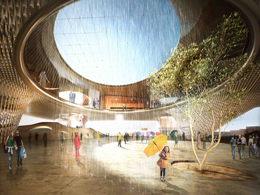
12 December, 2011
LAB
Greek distinction at the Disaster Prevention and Education Centre in Istanbul international Competition.
ThyssenKrupp Elevator in partnership with the Istanbul Metropolitan Municipality and under the auspices of the International Union of Architects [UIA] is proud to announce the winners of the ThyssenKrupp Elevator Architecture Award 2011. A total of 287 projects from 59 countries have been submitted to the international competition referring the new Disaster Prevention and Education Centre in Istanbul, Turkey. Before selecting the winning projects, the Jury short-listed ten proposals with merit, and then awarded the best three proposals.
Tsabikos Petras, Alexandros Kitriniaris, Ioannis Farkonas and Georgios Housos were awarded with merit for their project: LAB, which was among the ten short-listed candidates for the award.
Project Description
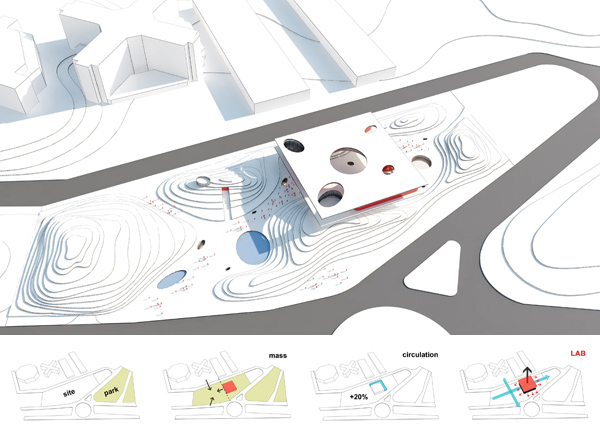
Concept of the proposal
Disasters: Destruction or Renewal?
The history of human civilization has recorded the intense effort and anxiety to control the natural elements; particularly those leading to natural disasters. Earthquakes, floods, forest fires and hurricanes comprise dramatic moments in history on the one hand, on the other they play an important part in the rebirth of nations and communities. Every disaster is followed by a new dawn, with the knowledge of the past as its prize.
Natural disasters are unpredictable. The LAB is a valuable asset for crisis response to the natural observation by the human culture through the reconstruction of its interrelation.
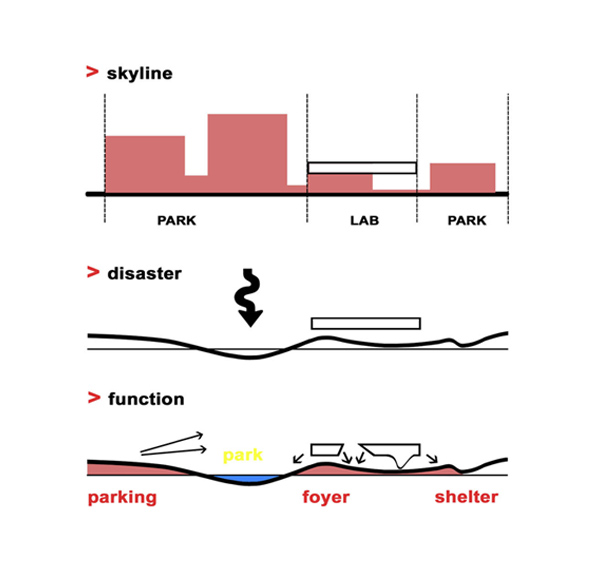
Concept diagrams
CONCEPT
The architectural proposal does not view the element of destruction as an experience of horror, but as motivation for monitoring and understanding the unpredictable force of the natural elements. The building is contracted to the necessary mass and rises in the form of a laboratory that studies and monitors the new park created on the site. Through this synthesis of movement the street level allows unhindered public access and unifies it with the neighbouring, tree-studded hill, creating a wider network of green spaces throughout the city. The public park connects neighbouring areas, providing an arena for existing, as well as future cultural uses, with that of the university forming the most significant one.
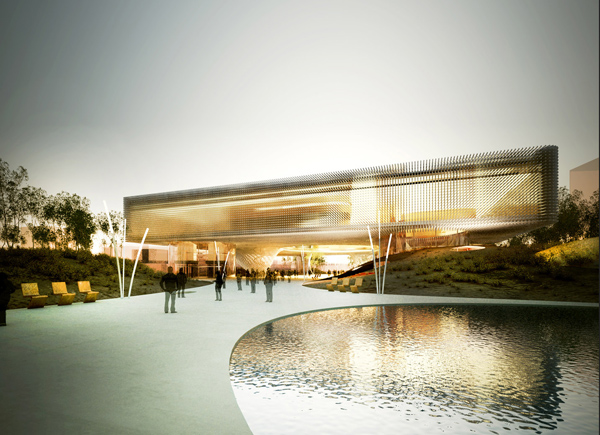
External view from the water tank
DISASTER AS A NEW TOPOGRAPHY - The Park and the LAB
A new topography is created as a point of destruction and rebirth. The ground is distorted, it receives the new functions of acting as a parking space, a foyer and a shelter, while simultaneously forming a natural relief that allows a view of the city and the building from higher ground and slopes. The building rises up over the disaster as a feat of advanced technology, controlling natural elements through scientific structures.

External view from the main access road
Its form is conceived as a precise, rectangular prism with the central atrium as its main feature. A series of apertures in its solid mass refer to test tubes for experimentation and observation, as well as spaces for vertical communication. The tube with the seismic monitor, the wind simulator, and finally the central atrium as a rain simulator, comprise the dominant elements of the experiential interaction with the building. Similar interactive events take place within the new topography on the level of the city, and are connected to the elements of water and fire. The overall experience within the space is encapsulated in a public tour around experiments and educational events which take on the form of public exhibits.
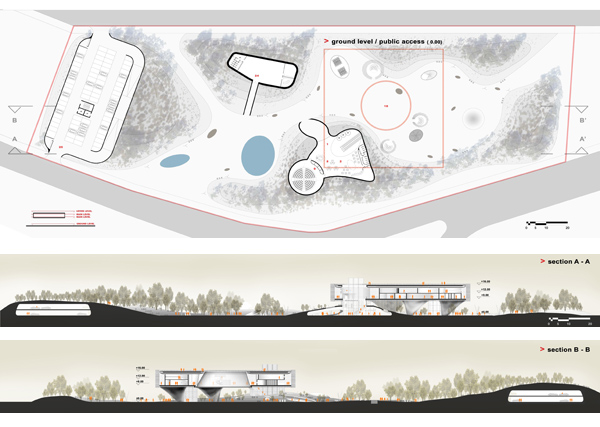
Plan and Sections
EXPERIENCE OR OBSERVATION?
Both the building and the landscape form a broader landscape unit. The visitor experiences the space either through engagement or observation. They may actively participate in the experimental processes, or observe the natural phenomena on earth and in the sky. This comprises a new proposal, where the building does not function as an isolated unit, but externalizes its functions within the city, in the form of public exhibits, within a new cultural axis for the surrounding area as well as the metropolitan community.
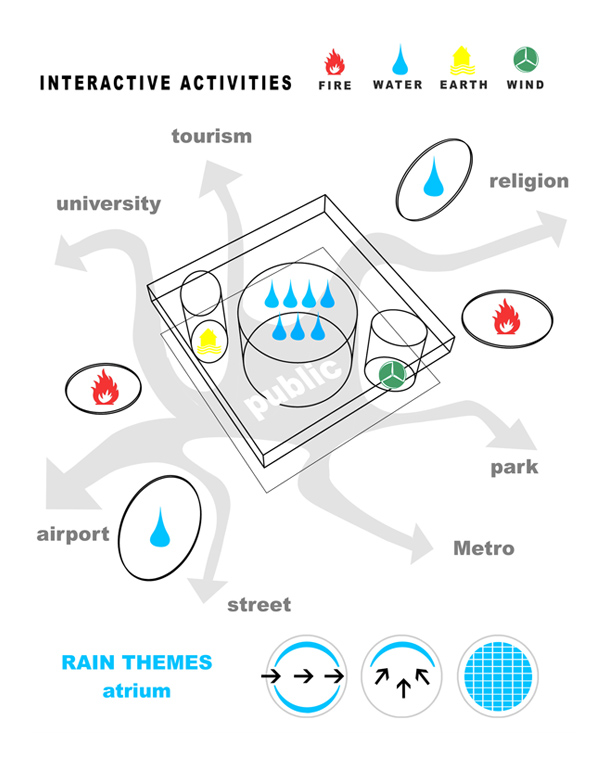
Function diagram
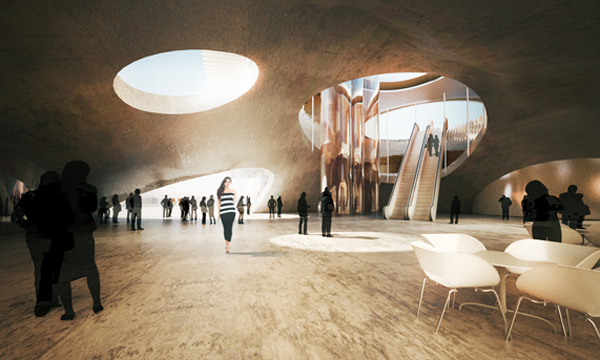
Internal view of the foyer
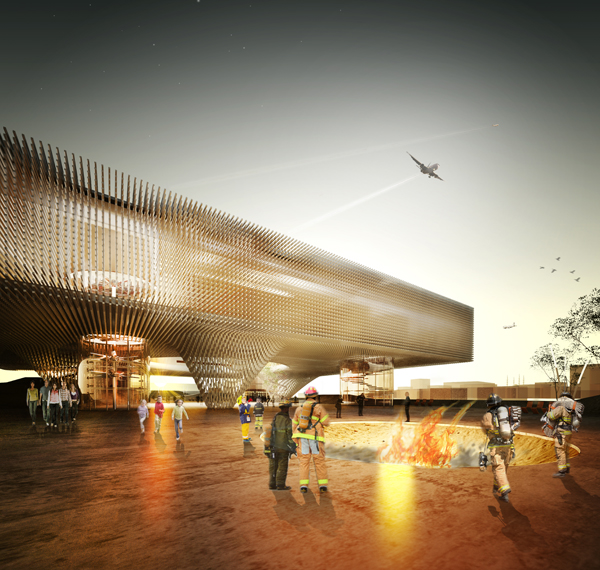
External view of the fire field
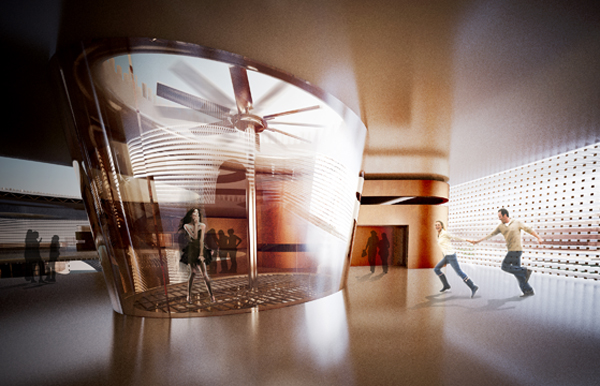
Internal view of the wind simulation mechanism
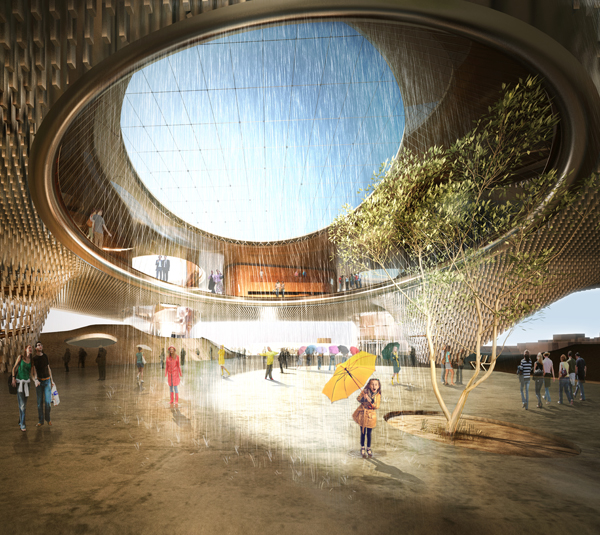
View of the atrium and the rain simulation mechanism
Project Team:
Tsabikos Petras, Architect NTUA, MPhil NTUA, PhD Cand. NTUA
Alexandros Kitriniaris, Architect NTUA, Mphil Cand. NTUA
Farkonas Ioannis, Architect NTUA
Georgios Xousos, Architect NTUA
The awarded projects can be found here.










